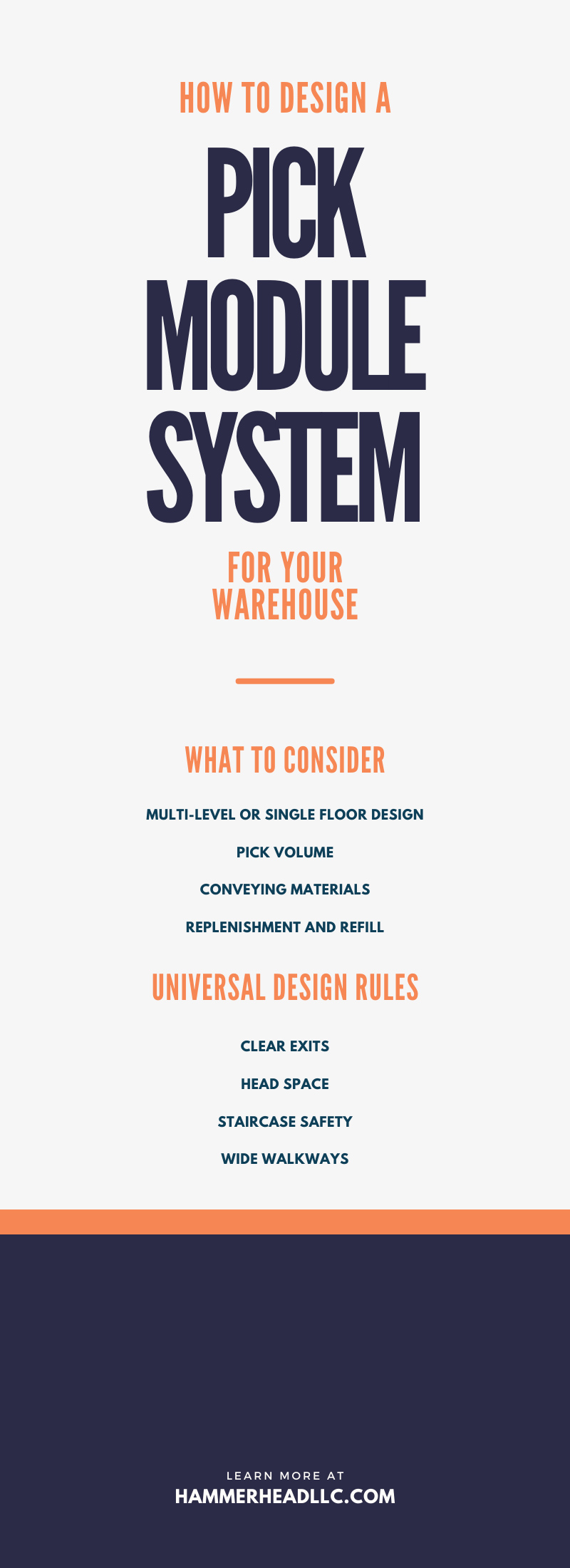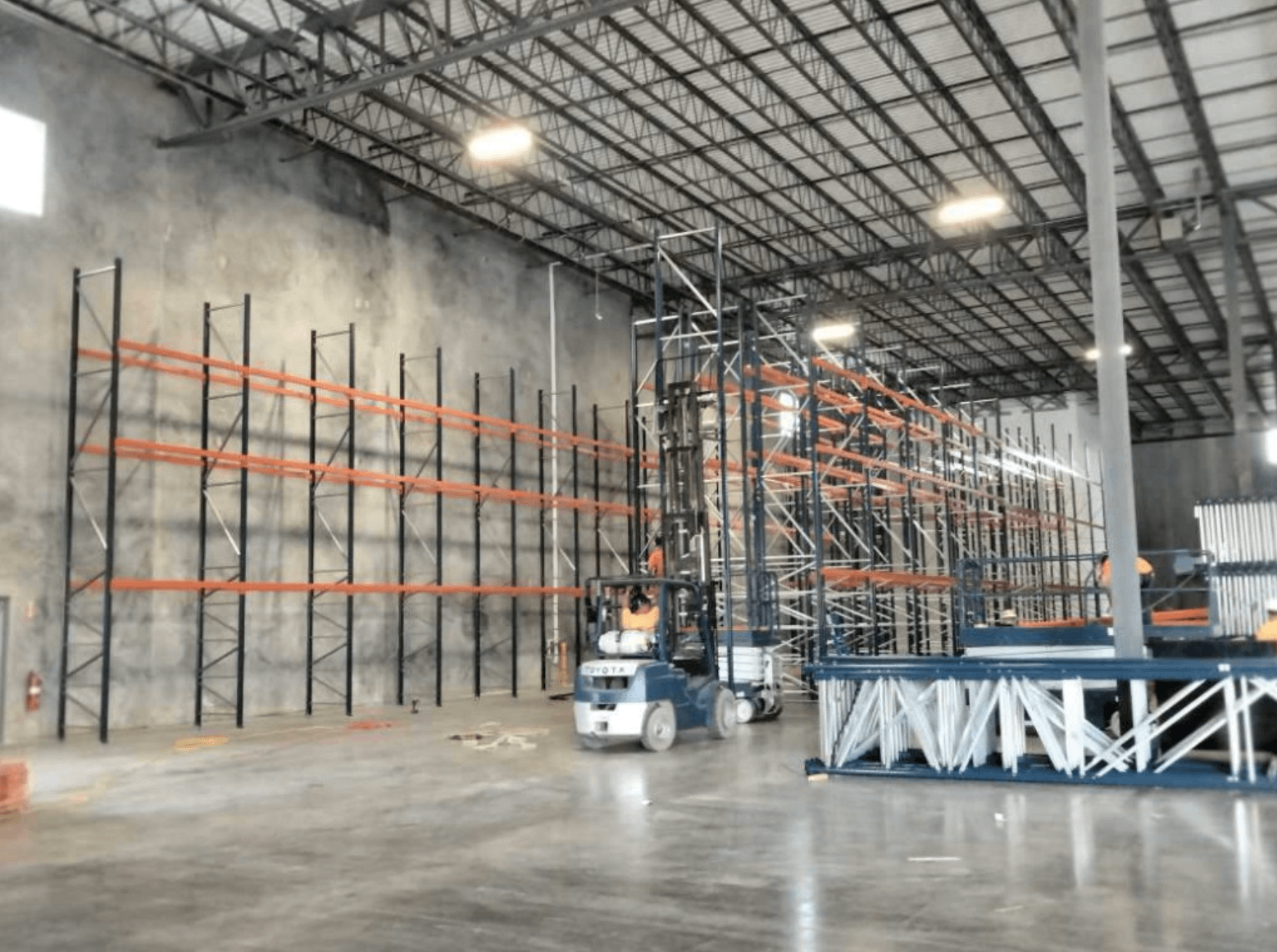There are many different floor designs business owners use to increase efficiency and productivity. A lot of these systems involve a balance between investment and utility. Business owners want a low-cost investment for high efficiency. However, one system that stands out as a great option for any warehouse is the pick module system. If you want a great system for your warehouse that can handle whatever you need, then you should learn how to design a pick module system for your warehouse.
What’s a Pick Module System?
Before you can start designing your own system, you need to learn more about the pick module system. In general, these systems combine racking system together and use different technologies to raise efficiency. These systems are highly customizable to fit whatever needs you have in your warehouse.
Main Elements
Although pick module systems are typically very different from one another, there are some key features consistent through all the variants. Here’s a small breakdown of the things that make pick module systems so special.
Modular Storage
One of the most important parts of these systems is their modular nature. Each system can contain and combine different technologies and racking. A great example of this is a system that uses pallet flow racking. This system moves items to a conveyor that leads to regular pallet racking. From there, workers can easily pick them.
Variety Racking
Another defining feature of a pick module system is the wide variety of racking options available. Almost any racking can fit inside these module systems, letting you create a system perfect for your needs. What’s great about pick module racking is that you can trust the system to handle all your materials while working as efficiently as possible.
Picking Spaces
A major focus of these systems is picking the right spaces. You want to create easy picking for employees, whether it’s automatic or manual. A lot of the racking and parts inside these systems are for storage and for the safe picking of products and materials. You can expect clear, large picking faces in your racking with these systems.
Other Technology
Although a lot of the system uses standard racking, there’s plenty of other technologies that can mix with a pick module system. The most common one would be belt conveyors, but you can add a variety of technologies for the improvement of the system’s efficiency.
What To Consider
This is just the basics of what you should understand to know how to design a pike module system for your warehouse. There are many other things you should consider when looking for a system for your warehouse. Here’s a look into the most vital parts you should consider for your exact system.
Multi-Level or Single Floor Design
One of the first things you should decide is the size of your design, because each has different needs. A pick module system typically comes as either a single floor model or as a multi-level system. The multi-level efficiently uses floor space but has a lot more design features like stairs and railings in comparison to the single floor design.
Pick Volume
Another very important part of these systems is the pick volume you may need in the future and what you need right now. Getting a system that lets you scale with more pickers can help you prevent bottlenecks and productivity slowdowns. Additionally, systems that can scale back can save you a lot of money over time.
Conveying Materials
One of the major design choices you’ll eventually need to make is how you move items through the system. Many warehouses use people to load and unload items from racking inside the pick system. But a good conveyor system can save a lot of time and reduce wasted time, helping your workers focus on just picking items.
Replenishment and Refill
One of the last major things you should consider is how you plan to put items into the system. You want to design a system that can handle loading without wasting space. So, designing the system with the methods in mind from the beginning can make everything a lot easier as time goes on. Some common issues are how many ways you need to load and whether you’re using forklifts or a manual input.
Universal Design Rules
Just as there are common features you can find in any pick module system, there are universal design rules you should follow for the safety of your workers. Most of these rules are for the benefit of your workers and should be top priority as they can help prevent injuries at work.
Clear Exits
The first thing you should do is build a modular system that includes wide exits throughout the system so that workers can leave safely. These exits should be wide enough for workers and anything they need to carry. This extra space can help your workers avoid injures as long.
Head Space
Another large part of safety in and around the pick module system is the overhead space. Workers should never need to duck or crouch to navigate your system, or you increase the chances of injuries. This is especially true for workers who carry items, as the products may need more space than the workers to travel through the area.
Staircase Safety
Another large part of design rules is being safe around staircases, as every staircase can cause massive injuries if things are not in the proper place. A good staircase has the proper spacing and lighting to make everything easy to navigate. It’s also important to have handrails and other safety features as it can save your employees down the line.
Wide Walkways
The walkways in and around your pick module system need to be wide and clear of any obstructions. Trips and falls are some of the most common injuries in a workplace. Keeping your space open and clean is a key part of worker safety and should be a non-negotiable part of your system design.
These are the basics you need to know when developing a pick module system that’ll benefit your warehouse. You need to keep all this in mind to create the best system for your warehouse and save money. If you do, you’ll soon have an efficient system for storing and transporting items throughout your storage area.



